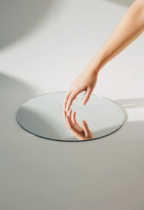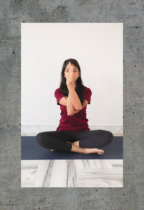
This post is a part of Sprig & Vine’s month of wellness: expect Good Food Good Vibes all January long! We will be posting content throughout January that will help you kickstart the year feeling well and good, with healthy eating hacks, feel-good recipes, and tons of wellness inspiration.
We aren’t getting enough sleep. Most of us spend our days running from one place to another, with a 1000 things on our to-do lists, always trying to get things done. It makes it nearly impossible for us to get calm and relaxed; to shut the million tabs open in our brains even during downtime. We’re always plugged in. It’s not uncommon to have trouble sleeping, to stay tossing + turning late into the night. If you’re struggling to switch off, you’re not the only one.
Sleep is now considered VERY IMPORTANT (as it should be). Scientists and studies are saying how adequate sleep makes us more productive, get healthier, and improves mental health. Lack of sleep has been linked to weight gain, whacky hormones, high blood pressure, and increased sugar cravings.
If you want to sleep better (get adequate high-quality deep sleep), there’s the standard advice: go to bed at the same time everyday, get blackout curtains, keep your room cool, don’t drink caffeine after 2pm, work out, reserve your bed for naps, not Netflix (or Instagram). This advice is well and good, except it’s not always possible to follow.
We are now living an era of “sleep technology” that is giving us reason to stay plugged in even when we sleep! From cooling pajamas, smart pillows and mattresses, to sleep tracking apps and wristbands – these high tech sleep aids promise you better sleep while burning a deep hole in your pockets.
There’s one ancient yogic practice however, that is making waves these days for aiding better sleep:Yoga Nidra.
Yoga Nidra or yogic sleep is a state between sleep and consciousness. It’s said that 45 minutes of Yoga Nidra is as restorative and healing for our bodies as almost 3 hours of deep sleep is! It can release muscle tension, lower blood pressure, slow down the heart rate, and regulate breathing.
A session of Yoga Nidra follows the form of a guided meditation, along with deep breathing. It is practiced in the Shavasana position (lying flat on the back), and includes imagery and body scanning techniques of meditation.

Yoga Nidra is often practiced after a yoga session of asanas and transitions. While a typical yoga class ends with a quick Shavasana, Yoga Nidra is a lengthier mediation requiring at least 20 minutes to reach that state of relaxation. It aids muscle recovery, cools down the body, and provides deep emotional + physical healing. As its benefits are becoming more well known (said to ease insomnia, decrease anxiety and stress, foster feelings of calmness and clarity, and increase productivity); more people are turning to Yoga Nidra for rest and recovery.
What’s best about this practice is that it is accessible to all levels of practitioners, and you don’t need to attend a class to reap its benefits. Yoga Nidra can be done from the comfort of your room (or bed), by following a guided video or track. The aim is not to fall asleep during the practice (even though you will the first few times), it’s for what lies after. A 20 minute session will help you cool down, calm the mind, and relax the body; setting you up for restoring deep sleep – maybe the best you’ve had in weeks.







